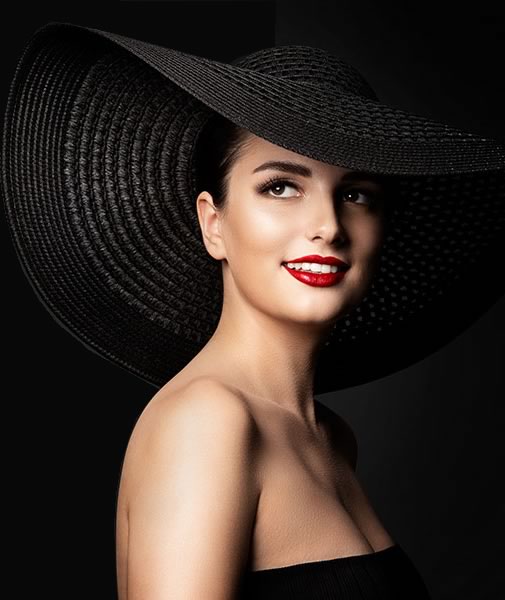 Ms. X is 42 years young, but she is bubbly and energetic. She feels betrayed by the tired look around her eyes. She knows she looks older than she is.
Ms. X is 42 years young, but she is bubbly and energetic. She feels betrayed by the tired look around her eyes. She knows she looks older than she is.
Miss Y is 39, and not really ready to undergo a complete facelift. She has only recently realized that it is the drooping tissue of her lower eyelids that makes her look older.
Mrs. Z is only 45, and she has always been a little shy but genuinely happy. Lately she has noticed people misinterpreting her demeanor and asking questions. Friends say, “What is wrong, and why are you so sad?”
She caught her reflection in the mirror and realized that there is a distinct downward droop in her upper eyelids. (Gasp!) She knows what to do. She knows about blepharoplasty, the plastic surgery for eyelids that can erase years, and that untrue worry and fatigue from your face.
Mr. A is 37, and he knows his youthful image, among the competitive young stockbrokers at his firm, is fading fast. He doesn’t expect surgery to make him suddenly movie-star handsome, but he does hope it will give him a refreshed, rested, and more vigorous appearance.
This month, Dr. Peter D. Geldner of Chicago described what happens when the upper and lower eyelids begin to reflect our age.
“Several changes occur in our eyelids as we age. By your late 30s or early 40s, the thin skin on our eyelids starts to lose its elasticity and begins to stretch, resulting in excess folds of skin that may actually hang down over the edge of the upper eyelids. In most people, this skin is the first to go.”
He added, “As we get older, the muscles beneath our skin also grow weaker, allowing fat to protrude through and cause bags, particularly in the lower eyelids. The levator muscle, which lifts the upper eyelids can become weak, causing the upper eyelid to droop. Fine wrinkle lines and creases appear in the delicate skin around the lids.”
At Orlando Cosmetic Surgery, we help people like Ms. X., Mr. A., Miss Y., and Mrs. Z. every day. We have blogged about blepharoplasty previously and we invite you to review some of the basic blepharoplasty facts by taking a quick look at our previous articles.
 To put it simply, the procedure, as stated Dr. Gelder, “corrects drooping upper eyelids and puffy bags below the eyes by removing excess fat, skin and muscle. It goes a long way in restoring a youthful appearance with minimal cost, risk and recovery time.”
To put it simply, the procedure, as stated Dr. Gelder, “corrects drooping upper eyelids and puffy bags below the eyes by removing excess fat, skin and muscle. It goes a long way in restoring a youthful appearance with minimal cost, risk and recovery time.”
Dr. Geldner must be correct because last year requests for eyelid surgery went up by 4 per cent. There were over 200 thousand procedures performed, and blepharoplasty was named one of the top five favorite plastic surgery procedures.
According to the experts at the American Society of Plastic Surgeons (ASPS), “14.6 million cosmetic plastic surgery procedures, including both minimally-invasive and surgical, were performed in the United States in 2012, up 5 percent since 2011. In addition, 5.6 million reconstructive plastic surgery procedures were performed last year, up 1 percent.”
Here are answers to some basic questions about blepharoplasty. The answers might help you decide if this procedure is right for you.
1. Ms X wanted to know, “Will I be asleep for the surgery?” You will definitely receive medicine to keep away the discomfort during the eyelid surgery procedure. At Orlando Cosmetic Surgery, the doctor will discuss intravenous sedation or general anesthesia with you during your consultation.
2. Mr. A wanted to know, “Will I have scars around my eyes?” The answer is no, because the incisions are designed to be well hidden within the natural folds of the eyelid area.
3. Mrs. Z wanted to know precisely how drooping upper eyelids could be corrected. At Orlando Cosmetic Surgery, we welcome detailed questions, and value giving informed answers to our patients. “So, what does the surgeon actually do?” Through an incision in the natural crease of the upper eyelid, the surgeon removes deposits of fat. He continues by tightening muscles and tissue, and even possibly removing the drooping excess skin.
our patients. “So, what does the surgeon actually do?” Through an incision in the natural crease of the upper eyelid, the surgeon removes deposits of fat. He continues by tightening muscles and tissue, and even possibly removing the drooping excess skin.
4. Miss Y wanted information on what additional measures could be done to eyelids to make her look more rested, and as happy as she felt. Sometimes, our surgeons utilize a laser chemical peel to erase or mitigate dark discoloration of the lower eyelids. Blepharoplasty combines well with other surgical procedures. So, it is also possible that a brow lift or a mini-brow lift might be recommended in conjunction with your blepharoplasty.
Marc Malek, MD, from Scottsdale, Ariz. stated “The 40’s are a time when the aging process really begins to set in. We typically, start to see the earlier signs of aging around the eyes and forehead. The skin around the eye is prone to wrinkle and show redundancy.” He added, “It’s no surprise that patients between the ages of 40-54 are likely to undergo an eyelid and/or brow lifting surgery in order to minimize these changes.”
All of our patients are always curious about recovery from such a procedure. We know you will have some swelling, bruising and discomfort, but you will have medicine and cold compresses to help you through the recovery. Normally, our patients return to a full schedule in seven to ten days. As the bruises fade, you will soon see the results of your blepharoplasty. Your look will be rejuvenated, refreshed, alert and well rested.
 The characters pictured in our mini-case-studies above are fictitious, but their conditions and concerns are real. We know blepharoplasty will restore the natural beauty of the contours of your eyes.
The characters pictured in our mini-case-studies above are fictitious, but their conditions and concerns are real. We know blepharoplasty will restore the natural beauty of the contours of your eyes.
Friends are bound to compliment you new appearance, but we won’t reveal your secret. As we have stated in previous blogs, your confidentiality is always protected at Orlando Cosmetic Surgery. As we have said before, “They are your private eyes!”
Thank you for reading our blog, and once again we remind you to select your plastic surgeon with great care.
Be certain you choose a surgeon who is an ASPS member. This means he or she is certified by The American Board of Plastic Surgery.






